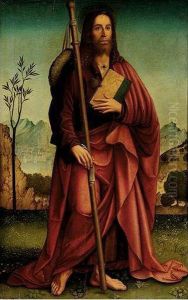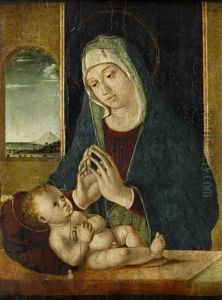Antonello Da Saliba Paintings
Antonello da Saliba was a notable Italian Renaissance painter, born in the late 15th century around 1466 or 1467, in the town of Messina, Sicily. He belonged to a family of artists and was the nephew and pupil of the renowned painter Antonello da Messina, who played a significant role in introducing Renaissance art and techniques to the island of Sicily and beyond. Antonello da Saliba's career was greatly influenced by his uncle's style and methods, which he adapted and continued, thus serving as an important conduit for the dissemination of Renaissance ideals in Southern Italy.
During his lifetime, Antonello da Saliba contributed significantly to the spread of the Renaissance style in Sicily, where he primarily worked. His oeuvre includes religious subjects, often executed for churches and cathedrals, as well as portraits. His works are characterized by their detailed execution, serene human figures, and the use of light, reflecting the influence of his uncle as well as the broader Italian Renaissance movement. Notable works by Antonello da Saliba include the 'Virgin Annunciate' and a 'Crucifixion' scene, which demonstrate his skill in conveying religious themes with emotional depth and technical precision.
Despite his artistic pedigree and contributions, Antonello da Saliba has not been as widely recognized as his uncle or his contemporaries in the broader narrative of Renaissance art. However, his work remains an essential part of the study of Renaissance painting in Sicily, illustrating the regional dissemination of artistic techniques and styles during this period. He is credited with helping to maintain the high standards of Sicilian Renaissance art well into the 16th century, bridging the gap between the early and high Renaissance. Antonello da Saliba died in 1535, leaving behind a body of work that continues to be appreciated for its beauty and historical importance.

